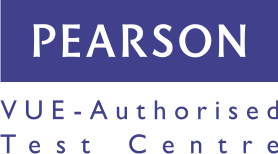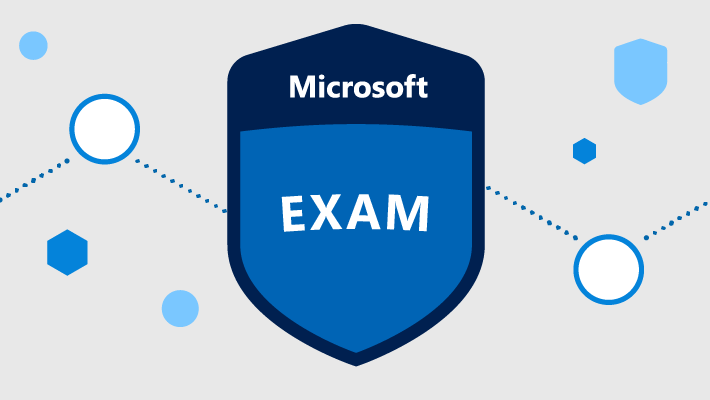O tym kursie
W tym kursie studenci nauczą się planować i wdrażać strategię instalacji systemu operacyjnego przy użyciu nowoczesnych metod instalacji, a także jak wdrażać strategię aktualizacji. Uczestnicy zostaną wprowadzeni do kluczowych składników nowoczesnych strategii zarządzania oraz współzarządzania. Kurs obejmuje również integrację Microsoft Intune w organizacji. Studenci poznają także metody wdrażania i zarządzania aplikacjami oraz aplikacjami opartymi na przeglądarce. Uczestnicy zostaną wprowadzeni do kluczowych koncepcji związanych z bezpieczeństwem w nowoczesnym zarządzaniu, w tym uwierzytelnianiem, tożsamościami, dostępem i zasadami zgodności. Studenci poznają technologie takie jak Azure Active Directory, Azure Information Protection i Windows Defender Advanced Threat Protection oraz sposób wykorzystania ich do ochrony urządzeń i danych.
Profil odbiorcy
Administrator nowoczesnego pulpitu wdraża, konfiguruje, zabezpiecza, zarządza i monitoruje urządzenia oraz aplikacje klienckie w środowisku przedsiębiorstwa. Obowiązki obejmują zarządzanie tożsamością, dostępem, zasadami, aktualizacjami i aplikacjami. Administrator nowoczesnego pulpitu współpracuje z administratorem M365 Enterprise w celu zaprojektowania i wdrożenia strategii urządzeń, która spełnia potrzeby biznesowe nowoczesnej organizacji.
Administrator nowoczesnego pulpitu musi być zaznajomiony z obciążeniami pracy M365 oraz posiadać silne umiejętności i doświadczenie w dziedzinie wdrażania, konfigurowania i utrzymania systemu Windows 10 oraz urządzeń innych niż Windows. Rola administratora nowoczesnego pulpitu koncentruje się na usługach chmurowych, a nie na technologiach zarządzania wewnętrznego.
Po ukończeniu kursu
Po ukończeniu tego kursu uczestnicy powinni być w stanie:
Moduł 1: Planowanie Strategii Wdrożenia Systemu Operacyjnego
Ten moduł wyjaśnia, jak zaplanować i wdrożyć strategię wdrożenia. Studenci dowiedzą się o koncepcjach wspierania pulpitu przez cały cykl jego życia. Moduł ten omawia także ocenę istniejącego środowiska i narzędzia używane do przygotowania strategii wdrożenia. Na koniec studenci zostaną wprowadzeni do narzędzi i strategii używanych do wdrożenia pulpitu.
Lekcje
Lab: Laboratorium praktyczne - Planowanie wdrożenia systemu Windows 10
Moduł 2: Wdrażanie systemu Windows 10
Ten moduł obejmuje nowoczesne metody wdrażania systemu Windows używane w powszechnych scenariuszach, takich jak aktualizacja i migracja do systemu Windows 10, a także wdrażanie nowych urządzeń i odświeżanie istniejących urządzeń. Studenci dowiedzą się także o alternatywnych metodach wdrażania systemu operacyjnego oraz o czynnikach uwzględnianych przy wyborze metod wdrażania.
Lekcje
Lab: Laboratorium praktyczne - Wdrażanie systemu Windows 10
Moduł 3: Zarządzanie aktualizacjami dla systemu Windows 10
Ten moduł obejmuje zarządzanie aktualizacjami systemu Windows. Moduł ten wprowadza opcje obsługi dla systemu Windows 10. Studenci dowiedzą się różnych metod wdrażania aktualizacji oraz jak skonfigurować zasady aktualizacji systemu Windows. Na koniec studenci dowiedzą się, jak zapewnić i monitorować zgodność aktualizacji za pomocą Windows Analytics.
Lekcje
Lab: Laboratorium praktyczne - Zarządzanie aktualizacjami dla systemu Windows 10
Moduł 4: Rejestracja urządzenia
W tym module studenci będą analizować korzyści i wymagania w zakresie współzarządzania oraz dowiedzą się, jak zaplanować jego wdrożenie. Moduł ten omówi także dołączanie do usługi Azure AD i zostanie wprowadzony do programu Microsoft Intune, a także dowiedzą się, jak konfigurować zasady rejestracji urządzeń. Moduł zakończy się omówieniem inwentarza urządzeń w Intune i raportowania za pomocą konsoli Intune, Power BI i Microsoft Graph.
Lekcje
Lab: Laboratorium praktyczne - Rejestracja i zarządzanie urządzeniami
Moduł 5: Konfigurowanie profili
Ten moduł zagłębia się w profile urządzeń Intune, obejmując rodzaje profili urządzeń oraz różnicę między wbudowanymi i niestandardowymi profilami. Uczeń dowiaduje się o przypisywaniu profili do grup Azure AD oraz monitorowaniu urządzeń i profili w Intune. Moduł zakończy się przeglądem korzystania z Windows Analytics w celu raportowania o stanie zdrowia i zgodności.
Lekcje
Lab: Laboratorium praktyczne - Zarządzanie profilami
Moduł 6: Zarządzanie aplikacjami
W tym module studenci dowiedzą się o zarządzaniu aplikacjami na miejscu i w chmurze. Moduł ten omówi, jak zarządzać wdrażaniem Office 365 ProPlus w Intune, a także jak zarządzać aplikacjami na niezarejestrowanych urządzeniach. Moduł zakończy się przeglądem trybu Enterprise w przeglądarce Internet Explorer i Microsoft Edge oraz śledzenia zainstalowanych aplikacji, licencji i przypisanych aplikacji za pomocą Intune.
Lekcje
Lab: Laboratorium praktyczne - Zarządzanie aplikacjami
Moduł 7: Zarządzanie uwierzytelnianiem w Azure AD
W tym module studenci zostaną wprowadzeni do koncepcji katalogu w chmurze za pomocą usługi Azure AD. Studenci dowiedzą się o podobieństwach i różnicach między Azure AD a Active Directory DS oraz o tym, jak synchronizować między nimi. Studenci zgłębią zarządzanie tożsamościami w Azure AD i dowiedzą się o ochronie tożsamości za pomocą Windows Hello for Business, a także o ochronie tożsamości w Azure AD i uwierzytelnianiu wieloskładnikowym.
Lekcje
Lab: Laboratorium praktyczne - Zarządzanie obiektami i uwierzytelnianie w Azure AD
Moduł 8: Zarządzanie dostępem i zgodnością urządzenia
W tym module studenci zostaną wprowadzeni do zarządzania bezpieczeństwem urządzenia. Moduł ten obejmie bezpieczny dostęp do zasobów korporacyjnych oraz wprowadzi koncepcje takie jak VPN zawsze włączony i zdalne połączenia w systemie Windows 10. Studenci dowiedzą się, jak tworzyć i wdrażać zasady zgodności oraz korzystać z zasad zgodności dla dostępu warunkowego. Moduł kończy się monitorowaniem urządzeń zarejestrowanych w Intune.
Lekcje
Lab: Laboratorium praktyczne - Zarządzanie dostępem i zgodnością
Moduł 9: Zarządzanie bezpieczeństwem
W tym module studenci dowiedzą się o ochronie danych. Tematy będą obejmować Windows & Azure Information Protection oraz różne technologie szyfrowania obsługiwane w systemie Windows 10. Moduł ten obejmie również kluczowe możliwości usługi Windows Defender Advanced Threat Protection oraz sposób wdrażania tych możliwości na urządzeniach w organizacji. Moduł kończy się korzystaniem z Windows Defender i funkcjonalnościami takimi jak antywirus, zapora ogniowa i Credential Guard.
Lekcje
Lab: Laboratorium praktyczne - Zarządzanie bezpieczeństwem w systemie Windows 10
Administrator nowoczesnego pulpitu musi być zaznajomiony z obciążeniami pracy M365 oraz posiadać silne umiejętności i doświadczenie w dziedzinie wdrażania, konfigurowania i utrzymania systemu Windows 10 oraz urządzeń innych niż Windows. Rola administratora nowoczesnego pulpitu koncentruje się na usługach chmurowych, a nie na technologiach zarządzania wewnętrznego. Zaleca się, aby studenci ukończyli kurs MD-100, Windows 10, przed przystąpieniem do tego kursu.
Firma jest Autoryzowanym Ośrodkiem Szkoleniowym MICROSOFT Silver Learning
Możesz u nas podejść do egzaminu Pearson VUE
Spółka posiada wpis do ewidencji placówek niepublicznych Nr ew. ES.VIII.4320-6/p.n./2003 wydany z upoważnienia Prezydenta Miasta Łodzi
 |
 |
Zachęcamy do skorzystania z możliwości dofinansowania szkoleń oferowanych przez naszą firmę. Dostępne rozwiązania:
Skontaktuj się z nami, aby uzyskać więcej informacji. Oferujemy pełne wsparcie w tym procesie.
Zapraszamy!
|
|
|
Przewidziany egzamin do szkolenia: MD-101 - Managing Modern Desktops
Zapisz się na egzamin już dzisiaj! Kontakt do Centrum Egzaminacyjnego: it@ntg.pl tel: 502 147 093 lub zapisz się przy pomocy formularza.


Najbliższy termin: Prosimy o kontakt
Najbliższy termin: Prosimy o kontakt
Najbliższy termin: Prosimy o kontakt
Najbliższy termin: Prosimy o kontakt
Najbliższy termin: Prosimy o kontakt
Najbliższy termin: 08-09-2025 09:00
Najbliższy termin: 02-09-2025 09:00
Najbliższy termin: Prosimy o kontakt
Najbliższy termin: 17-07-2025 09:00
Najbliższy termin: Prosimy o kontakt
Najbliższy termin: Prosimy o kontakt
Najbliższy termin: Prosimy o kontakt
